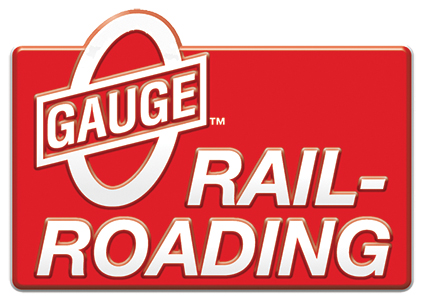Replies sorted oldest to newest
It depends on how long the feeds are. I'd probably stick with #14 for anything longer than around 12-15 feet.
I used Pigtail connectors for power feed conncections
Sorry Gargrave with 14 gauage wire no longer than 40 foot long
At a minimum, two feeders at opposite sides. 4 spaced at equal distances(N/S/E/W) around each loop will be better, there are lots of opinions out there, I'd use 16 gauge minimum, stranded is better than solid(my opinion![]() ). Imho, 14 ga. for an 11' x 8' is overkill.
). Imho, 14 ga. for an 11' x 8' is overkill.
hope this helps-----
This may be overkill, but a friend of mine uses a drop wires for every section of Gargraves track he installs, and then ties all the wires together on the underside of his layout.
However with all the problems I have had with tubular track I am temped to use his method the next time I do another layout. I had a siding on a previous layout that I wired both center rail and outside rails at every track section because of severe power loss, the siding was just over six feet and between two Lionel postwar 022 switches.
Lee F.
Trouble with house wire is that it's solid, and if you're going to run DCS stranded is recommended. I see no problem with using 12-gauge. I use 14 for hot feeds and 12 for common bus.
I can't imagine why DCS won't work with solid wire, that's certainly the first I've heard of it.
I never said it won't work with solid. I said stranded is recommended. Go back over the last few years of posts oin the DCS forum. High frequency currents tend to flow on the outside of conductors, not equally throughout., Stranded has more surface area.
Also, standed wire is much more flexible and resistant to breaking from vibration, a major problem with solid wire.
I have listened to this stranded versus solid debate for while and I'm going to give my opinion. Yes high frequency will travel better on stranded but is the DCS signal that high a frequency that it makes a real difference? Yes stranded is better for vibration but does it really matter on a static train layout? All the Rvs I've had over the years had solid Romex type wire for 120 volt Ac in them and I never had one break and I have put on a lot of miles on rough roads. I have never seen an Rv with 120 volt AC stranded wire in it although it's possible the million dollar custom coaches might have it. I think maybe this wire thing is a myth for toy train layouts.
Ron
Ron, I decided not to press the point, when someone's mind is made up, it's pointless to confuse them with facts. ![]()
Ron, on the other hand, I understand that marine standards require the use of stranded wire in boats, for reasons noted by hojack. I'm sure no research has been done on the DCS signal propagation, given the relatively small number of people interested in the subject. I have also not checked the prices on romex vs rolls of single conductor stranded.
I just did some Internet searches on RF propagation on stranded vs. solid wire. The general consensus is that at lower frequencies it makes no significant difference. It's only up in the VHF and higher frequencies that it really comes into play. Also, skin effect is partially negated on stranded wire that is not individually insulated. Finally, the short runs that are typical of a train layout (exclusive of someplace like the NJ Highrailers), it'll make even less difference.
I'm sure no research has been done on the DCS signal propagation, given the relatively small number of people interested in the subject. I have also not checked the prices on romex vs rolls of single conductor stranded.
I used 12-2 Romex for bus wiring on a rather large layout I am building. Cost is less than half (at Lowes and Home Depot) than buying rolls of individual stranded wire about $75 for 250 feet for Romex. For feeds I used #16 stranded. The cheapest way to buy it is to buy was to buy a 100 foot outdoor extension cord and cut it up. This is about $16.50 or about 6 cents per single wire foot. The stock rolled stranded wire was much more.
Since the layout is conventional the frequency issue does not concern me.
As for studying the DCS signal propagation, unfortunately it was not studied by MTH engineers before the system was released and we have users adding light bulbs and spotty results between individual layouts.
Dale H
I agree John. I don't remember the frequency of the DCS signal but I'm pretty sure it's nowhere near what I would consider high frequency. I think a well done wire job with attention to wire path, track joints and electrical connections will make far more difference in signal propagation.
Dale you're correct. The Romex is a lot cheaper and works just fine. I would rather spend my money on stuff rolling on the tracks than stuff sitting under the tracks as long as the system is reliable and maintenance free.
Ron
I agree John. I don't remember the frequency of the DCS signal but I'm pretty sure it's nowhere near what I would consider high frequency.
The frequency is around 3.27mhz, and it's a spread-spectrum signal, so it's not at a constant single frequency.


